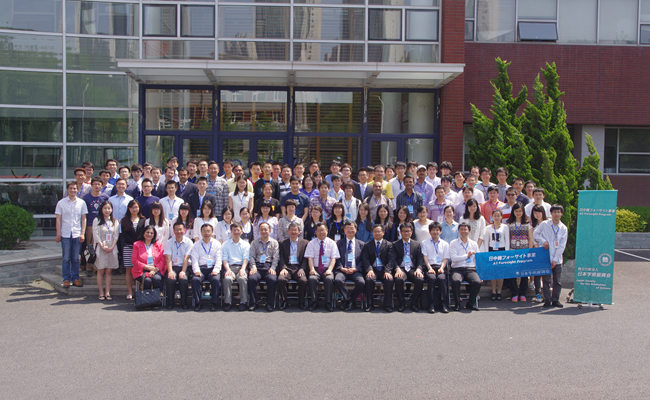The 7th Seminar on “Junction-based Composite Photocatalytic Systems for Efficient Overall Water Splitting”, part of a project funded by the A3 Foresight Program, was organized by Prof. Can Li’s group from Dalian Institute of Chemical Physics (DICP) and held on May 30th through June 2rd. The A3 Foresight Program is a joint program between National Natural Science Foundation of China (NSFC), Japan Society for the Promotion of Science (JSPS), and National Research Foundation of Korea (NRF). The project, led by Profs. Can Li (DICP, CAS), Kazunari Domen (University of Tokyo), and Jae Sung Lee from (Ulsan National Institute of Science and Technology), aims to, through complementary collaboration between these groups, address key scientific issues in solar fuels through the study of efficient conversion of solar energy to chemical energy. The ultimate outcome of the project is the establishment of a top-level research hub in Asia for photocatalytic and photoelectron chemical water splitting for hydrogen generation.
Plenary lectures were given by Profs. Domen and Lee, and 24 oral reports and 26 posters were presented by other researchers and students participating in the project. The seminar was chaired by Prof. Fuxiang Zhang, and Prof. Li delivered welcome remarks and briefly overviewed the background and aims of project, cooperation, research progress of the project, which began in 2010, and looked to the future of photocatalytic and photoelectron chemical water splitting.

More than 120 participants from The University of Tokyo, Ulsan National Institute of Science and Technology (UNIST) and DICP, attended the meeting, which included many discussions covering key scientific issues in photocatalytic and photoelectron chemical water splitting,with special emphasis on material preparation, surface modification, mechanisms, spectroscopic characterization, and theoretical calculations on the junction based semiconductor photocatalytic and photoelectron chemical systems for overall water splitting. During the two-day meeting, all the participants were engaged in scientific discussions on solar fuels and also experienced opportunities for cultural exchange, which helped to strengthen further collaborative efforts.